On October 24, 2024, the 10th Annual Conference of UPM Biomedicals took place at the MC3 Center in Basel, Switzerland, gathering industry experts, researchers, and professionals to discuss the future of biomedical innovations. The event, opened by Dr. Johana Kuncova-Kallio, showcased UPM Biomedicals' latest developments in biomedical research and its ongoing efforts to reduce animal testing. The conference not only focused on advancing technology but also emphasized sustainability and ethical practices in the biomedical field.
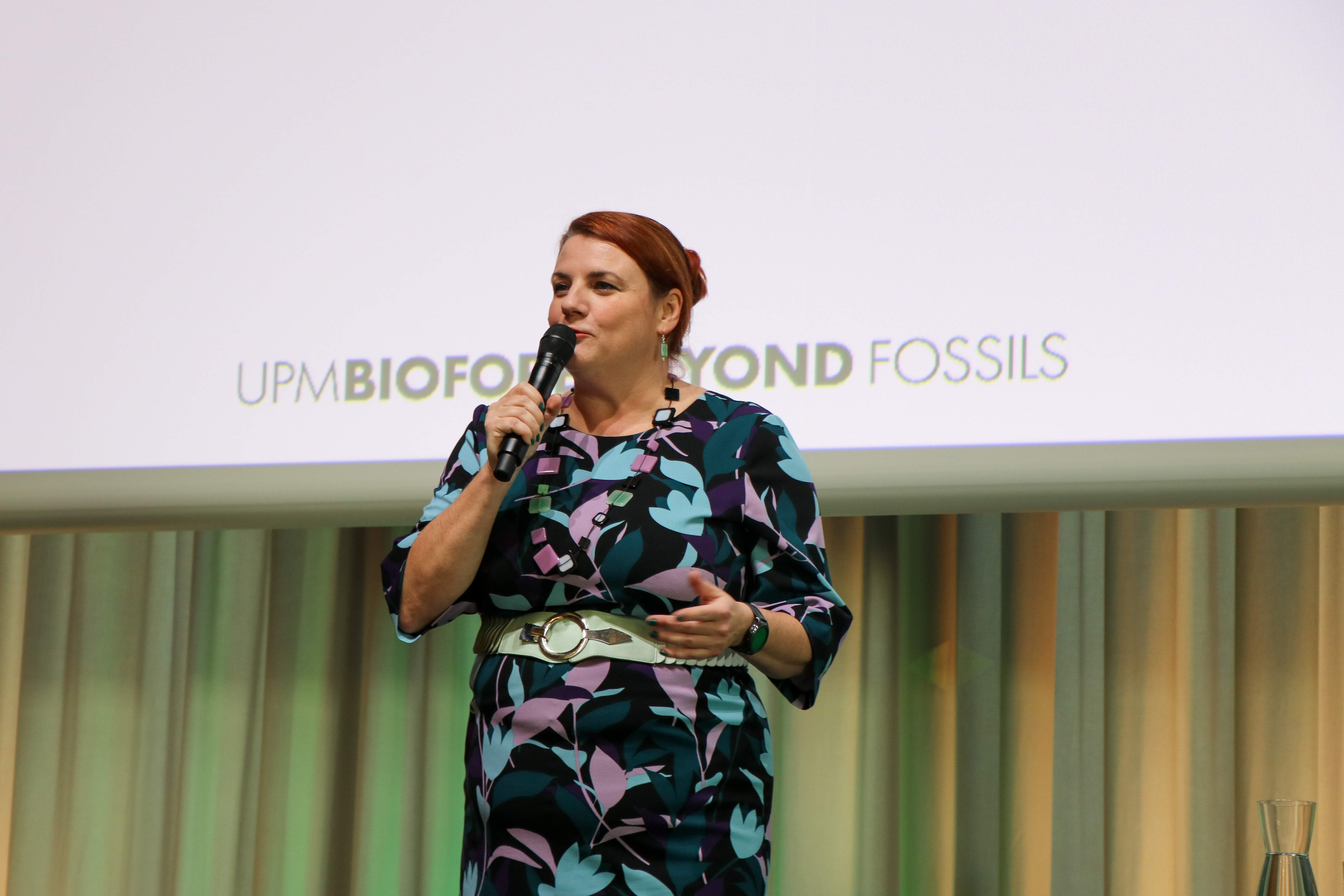
Pioneering Advances in Biomaterials for Implants
The first session of the day explored the session titled Biomaterials in Implants: Latest Innovations to Enhance Clinical Outcomes. Renowned experts presented cutting-edge research on soft biomaterials, particularly hydrogels, and their potential to revolutionize clinical applications in areas such as tissue repair and drug delivery.
After the opening speeches, the first session began on the topic of Biomaterials in Implants: Latest Innovations to Enhance Clinical Outcomes. The speakers were Michael Gasik, PhD, Full Professor at Aalto University Foundation; Sibylle Grad, PhD, Principal Scientist at AO Research Institute Davos; Taina Viheriälä, PhD, Faculty of Medicine and Health Technology, Tampere University; and Lauri Paasonen, PhD, Senior Scientist at UPM Biomedicals.
Overcoming Regulatory Challenges in Hydrogel-based Medical Devices
Dr. Michael Gasik, Full Professor at Aalto University, discussed the crucial role of hydrogels in soft tissue repair. He highlighted the regulatory hurdles associated with bringing hydrogel-based medical devices to market and stressed the importance of clinical validation. Gasik emphasized the need for collaboration among academia, industry, and regulators to overcome challenges related to safety and effectiveness.

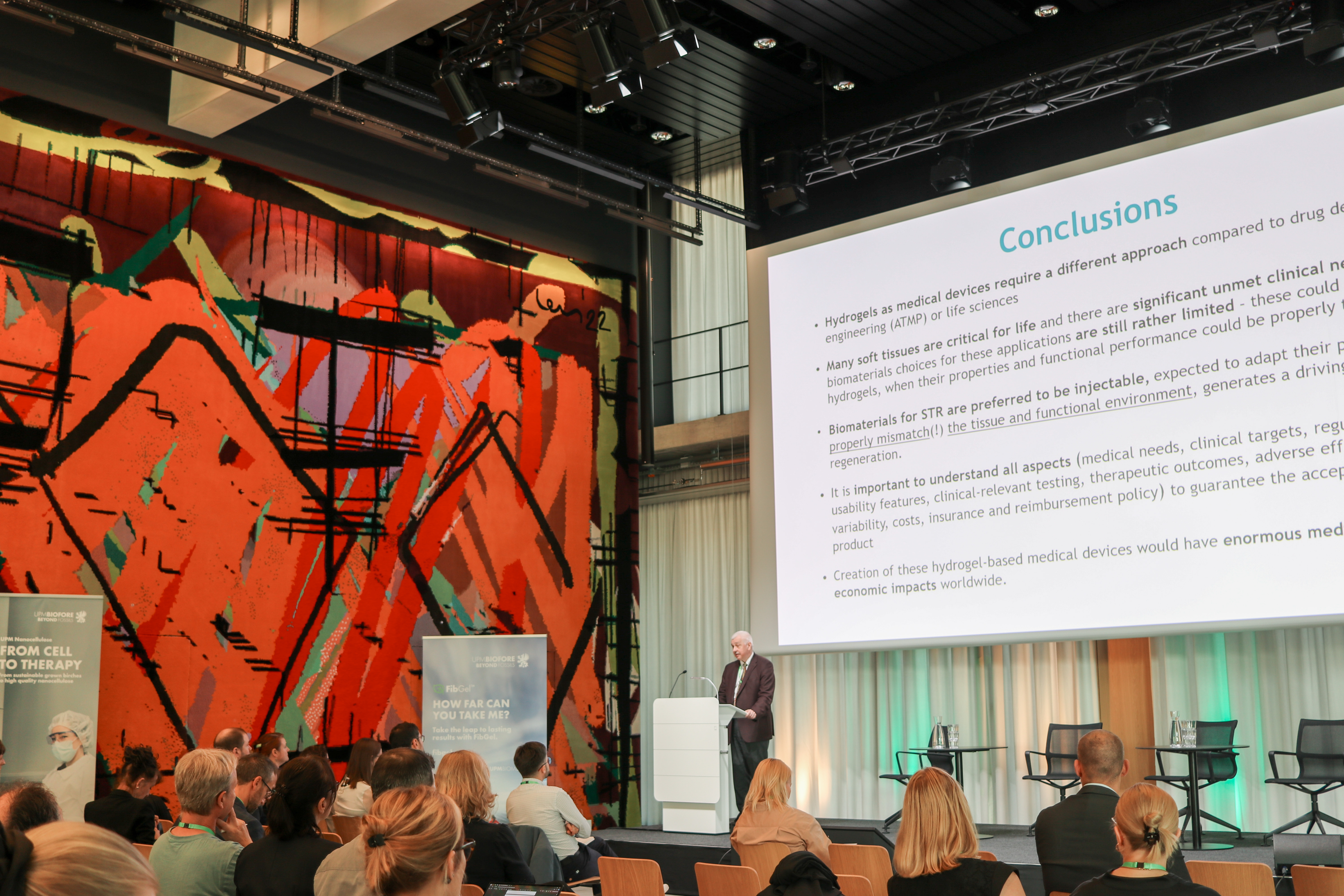
Transforming Orthopedic Medicine with Bioreactors
Dr. Sibylle Grad, Principal Scientist at the AO Research Institute, introduced innovative research methods using whole-organ bioreactors for studying cartilage and osteochondral regeneration. This high-throughput technology enhances the efficiency of research by allowing the simultaneous study of multiple samples, ultimately reducing the reliance on animal testing. The bioreactor system simulates mechanical conditions more accurately, potentially advancing treatments in orthopedic medicine.
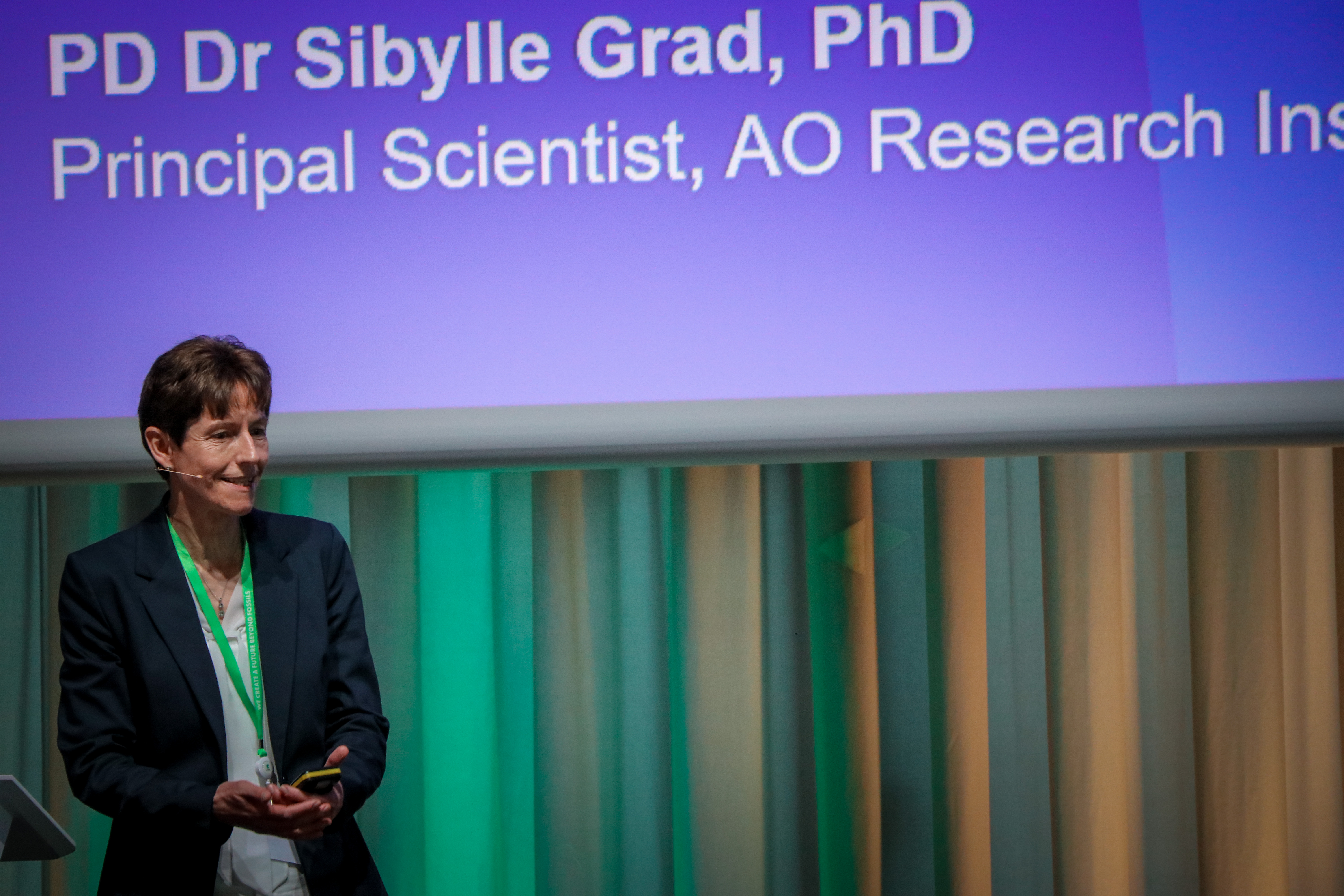
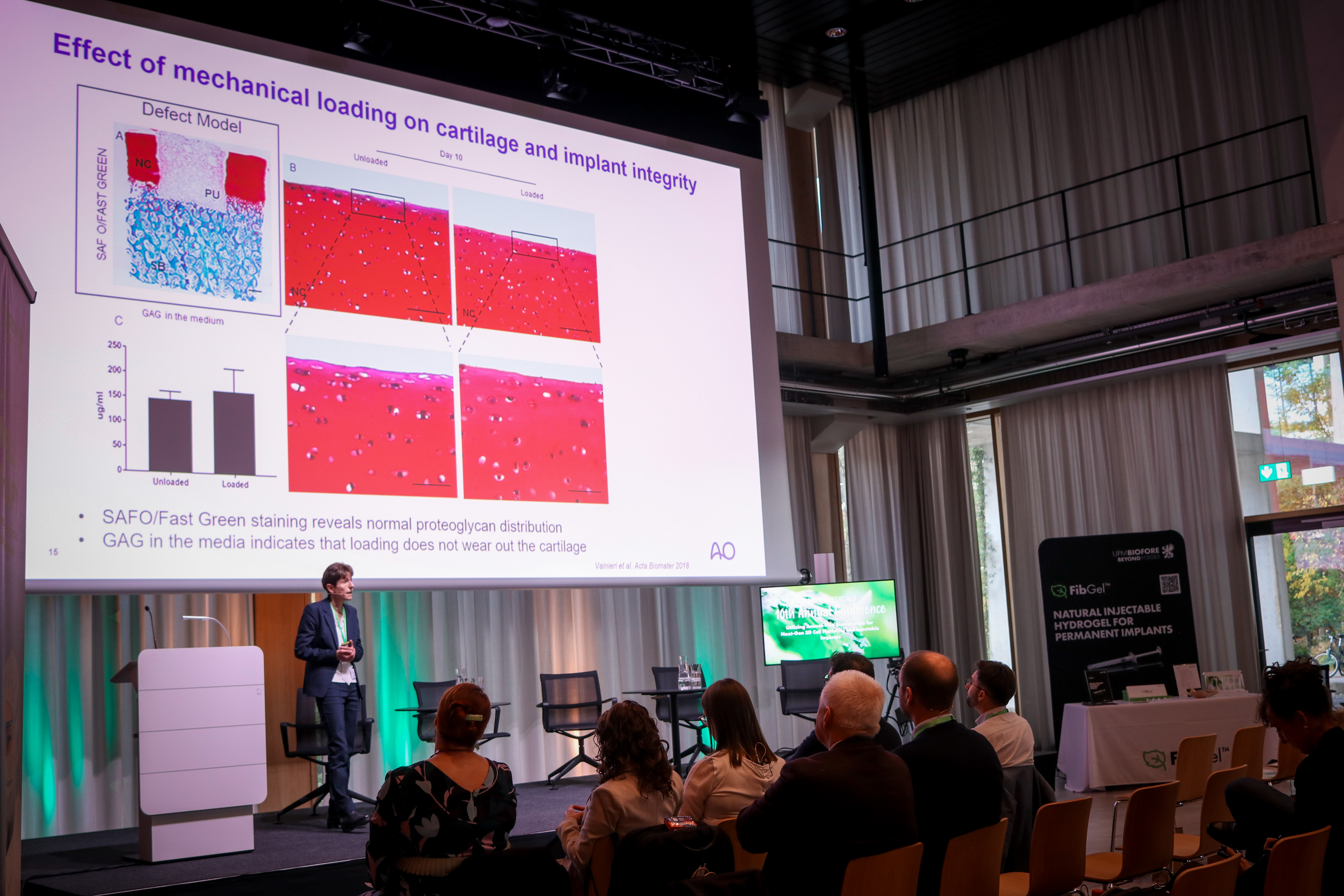
PRIME Project: Pioneering Epilepsy Treatment with Engineered Living Cells
Dr. Taina Viheriälä from Tampere University presented the PRIME project, which is developing an implantable device designed to treat epilepsy. The device uses engineered living cells to detect biomarkers released before a seizure occurs and respond by releasing neurotrophic factors to prevent the seizure. This innovative project highlights the potential of combining advanced biomaterials, cell engineering, and microfluidics to address neurological disorders.
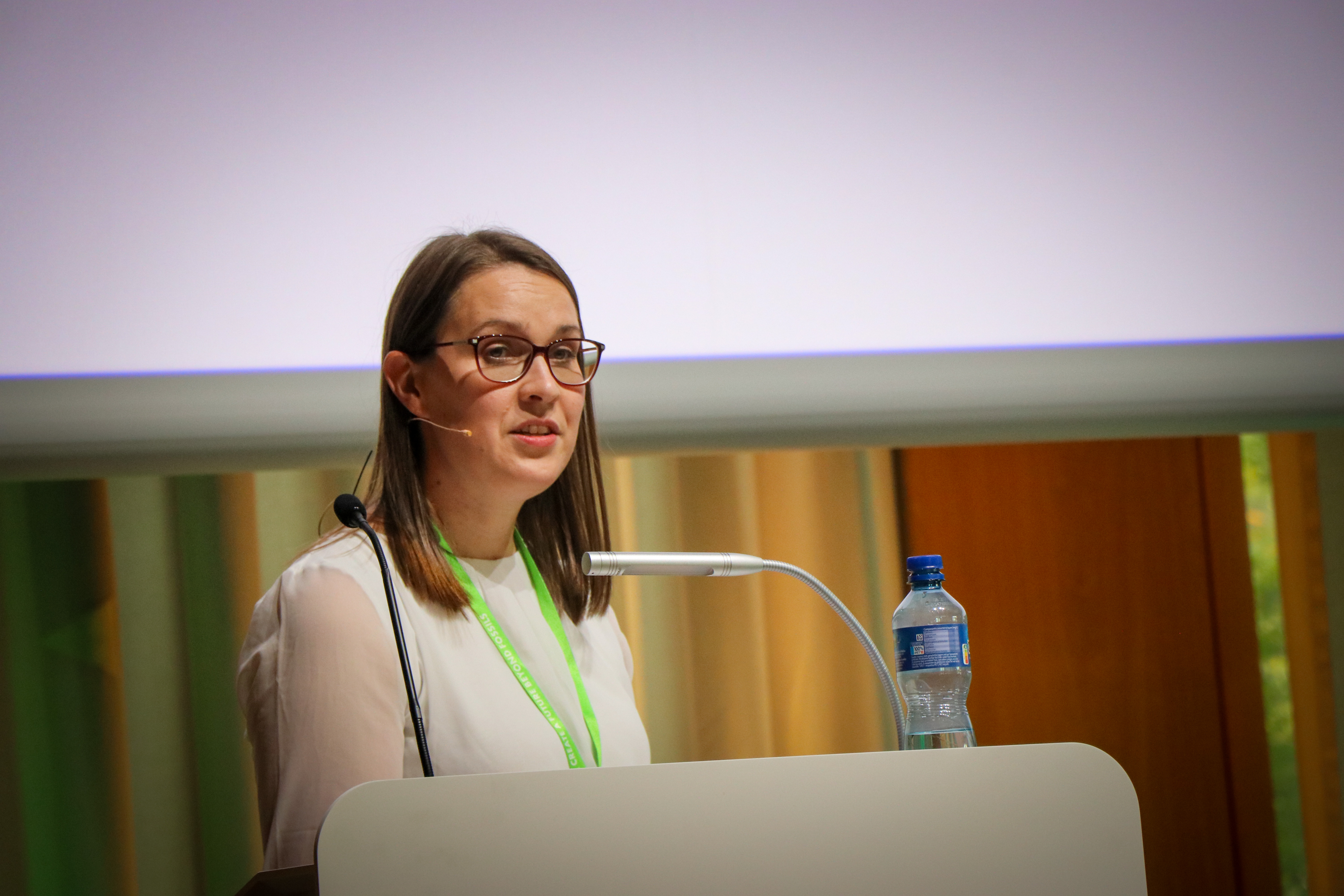
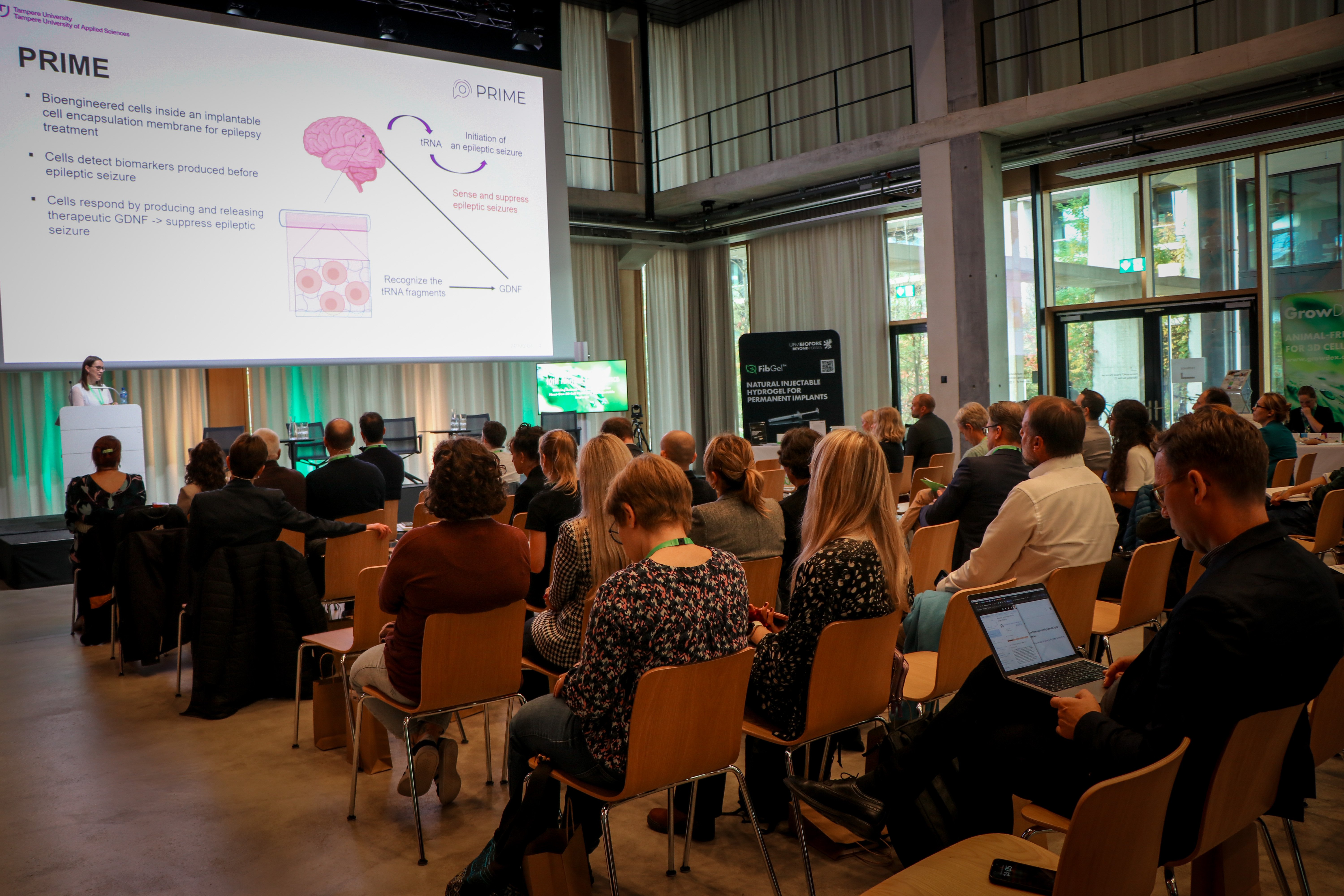
FibGel: Natural Injectable Hydrogel for Tissue Repair and Drug Delivery
Dr. Lauri Paasonen, Senior Scientist at UPM Biomedicals, presented FibGel, a sustainable, injectable hydrogel produced from birchwood. FibGel has shown promising results to be used as a platform in clinical applications such as soft tissue repair, orthopaedics, and drug delivery. Its unique shear-thinning properties allow easy injection through small needles while maintaining stability at the site of injection, making it a versatile platform for various medical applications. Paasonen also discussed the potential for partnerships with medical device developers to accelerate the translation to clinical use.

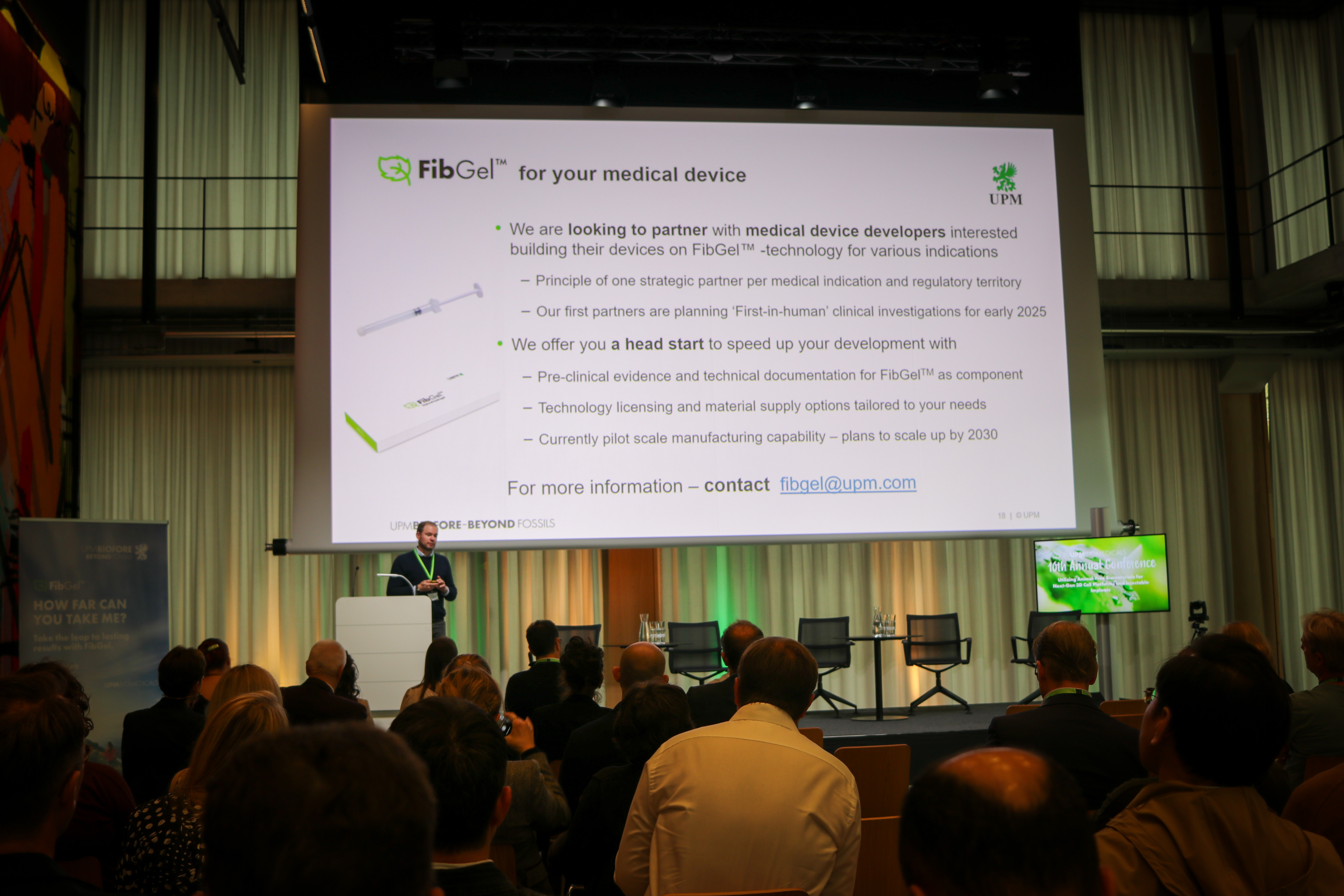
Panel Discussion: Natural vs. Synthetic Biomaterials
The 10th Annual Conference underscored the growing momentum towards animal-free biomedical solutions, with a focus on sustainable and ethically produced biomaterials. The cutting-edge research presented at the conference points to a future where the development of medical devices and treatments will increasingly rely on advanced biomaterials, engineered living cells, and innovative models that minimize animal testing.
As these technologies evolve, collaboration between academia, industry, and regulators will be essential to bringing these groundbreaking innovations to market and transforming patient care worldwide.
The session concluded with a panel discussion that explored the debate between natural and synthetic biomaterials, with a focus on their safety, effectiveness, and suitability for various medical applications. Key points discussed included:
Universal vs. Customized Biomaterials: While Dr. Gasik emphasized the goal of creating a universal biomaterial that is both affordable and effective, Dr. Sibylle Grad and Dr. Taina Viheriälä stressed the need for customized materials tailored to specific patient needs and diseases.
Challenges of Animal-Derived Materials: Dr. Lauri Paasonen raised concerns about the safety of animal-derived materials due to potential inflammation and variability, while highlighting the promise of natural materials like cellulose, which are still in early stages of development.
The Future of Animal Models: While there has been significant progress in reducing animal use, the panel acknowledged that animal models are still necessary for studying long-term effects and immune system responses.
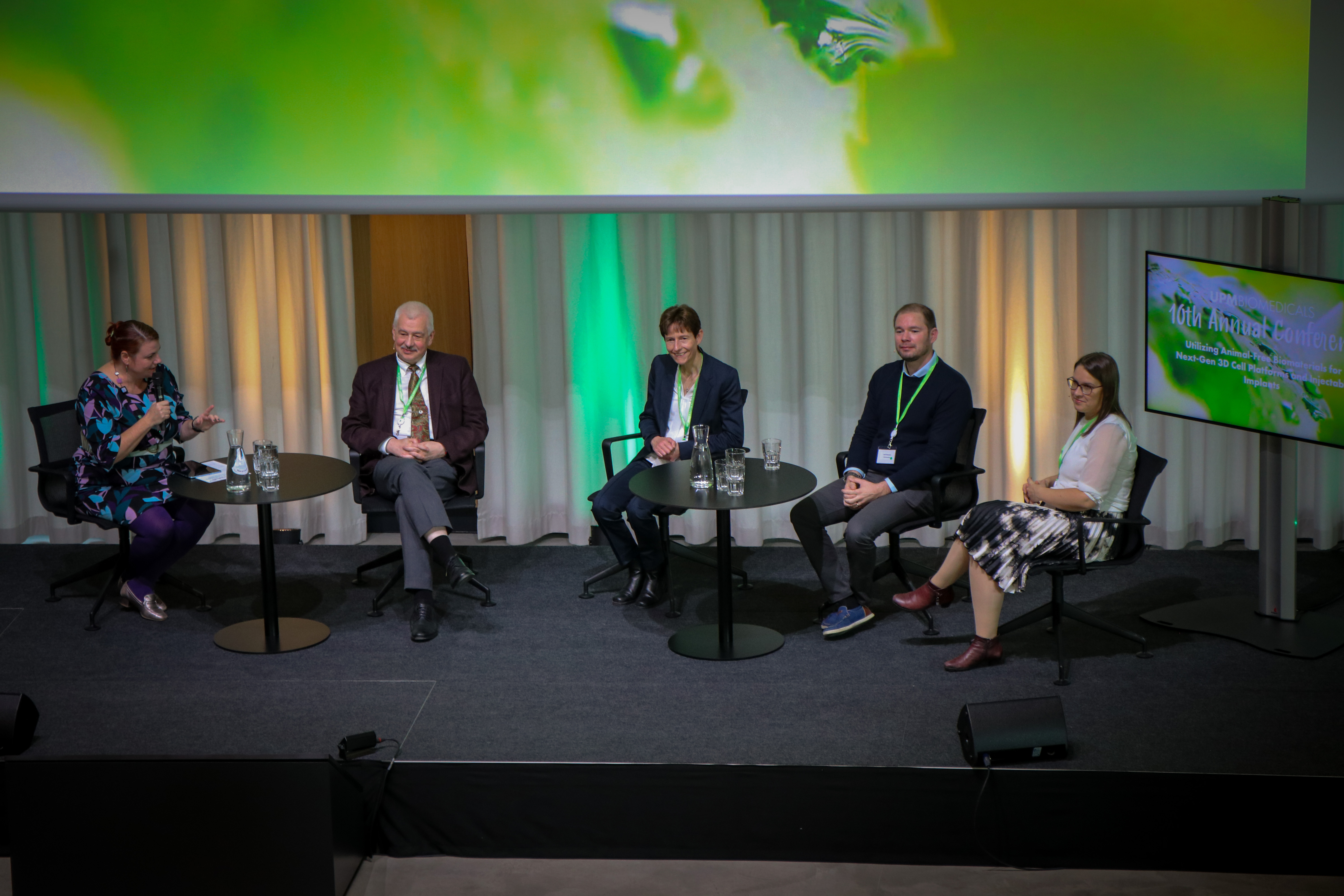
Looking Ahead: The Promise of Animal-Free Solutions
The 10th Annual Conference underscored the growing momentum towards animal-free biomedical solutions, with a focus on sustainable and ethically produced biomaterials. The cutting-edge research presented at the conference points to a future where the development of medical devices and treatments will increasingly rely on advanced biomaterials, engineered living cells, and innovative models that minimize animal testing.
As these technologies evolve, collaboration between academia, industry, and regulators will be essential to bringing these groundbreaking innovations to market and transforming patient care worldwide.
If you would like to watch the full sessions of the 10th Annual Conference, please click the link below: